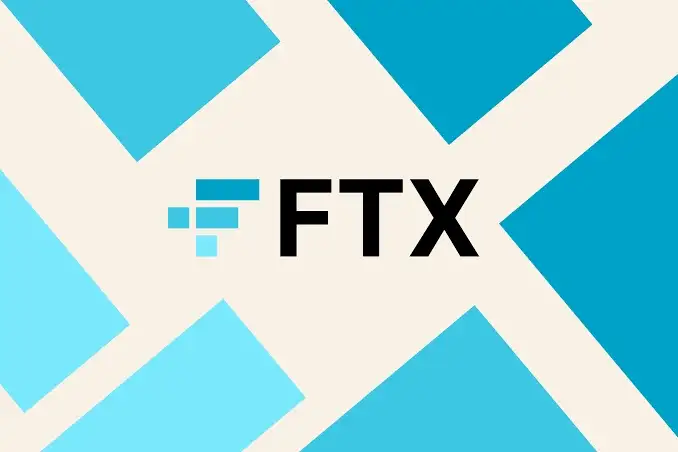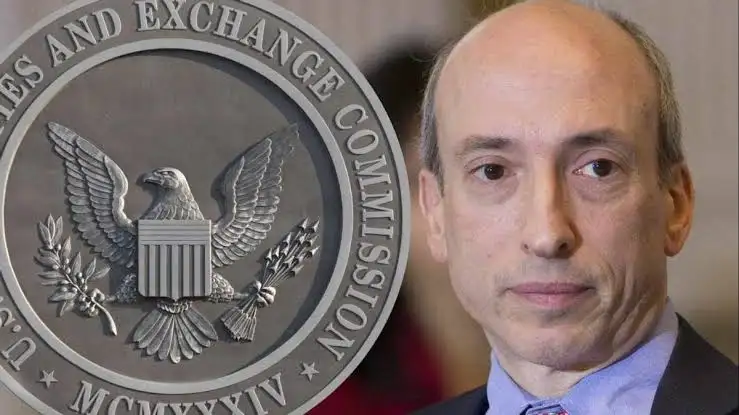
TL;DR:
Forex trading refers to the exchange of major fiat currencies like USD, EUR, and JPY, occurring both through centralized exchanges and directly between financial institutions in the decentralized over-the-counter (OTC) market.
On the other hand, crypto trading entails the buying and selling of digital assets like Bitcoin and Ethereum on centralized and decentralized exchanges.
Forex trading, also known as foreign exchange trading, is the process of buying and selling currencies to profit from fluctuations in exchange rates.
It operates within established economic frameworks and traditional banking systems, providing exposure to a wide range of currency pairs.
Crypto trading involves the buying and selling of digital assets, such as cryptocurrencies, tokens, and altcoins, on centralized and decentralized platforms.
Unlike fiat currencies, cryptocurrencies primarily exist in the digital space and are stored on blockchain networks.
Understanding the disparities between forex and crypto trading is paramount for investors as it enables them to make informed decisions based on their risk tolerance, investment goals, and market conditions.
By comprehending the unique characteristics of each market, investors can effectively manage their portfolios and capitalize on opportunities while mitigating risks.
Forex market liquidity: The forex market is renowned for its high liquidity, driven by the immense volume of currency transactions conducted daily by governments, financial institutions, corporations, and individual traders.
This liquidity ensures that traders can enter and exit positions with ease, minimizing the risk of price slippage.
Cryptocurrency market liquidity: While liquidity in the cryptocurrency market has improved over the years, it remains lower compared to forex.
Factors such as market fragmentation, varying trading volumes across exchanges, and the limited number of participants contribute to fluctuations in liquidity levels.
Factors influencing volatility in forex: Volatility in the forex market is influenced by different factors such as economic indicators, geopolitical events, central bank policies, and interest rate decisions. Furthermore, market sentiment and speculative trading activities can aggravate volatility.
Factors influencing volatility in crypto: Cryptocurrency markets are highly volatile due to factors like technological advancements, regulatory developments, market sentiment, and speculative trading.
The relatively small market size and lack of regulatory oversight amplify price swings in the crypto space.
Forex market hours: The forex market operates 24 hours a day, five days a week, starting with the opening of the Asian session on Sunday evening and closing with the New York session on Friday afternoon (Eastern Time).
This continuous trading cycle allows traders to participate in the market at any time, depending on their geographical location and trading strategy.
Cryptocurrency market hours: Unlike the forex market, the cryptocurrency market operates 24/7, without any centralized exchange or official opening or closing times.
This round-the-clock trading environment provides traders with flexibility but also presents challenges like increased exposure to price fluctuations during off-peak hours.
Availability
Requirements for forex trading: To engage in forex trading, individuals typically need to open an account with a regulated forex broker.
They may also need to provide identification documents and meet minimum deposit requirements. Additionally, traders require access to trading platforms and market analysis tools.
Requirements for crypto trading: Crypto trading generally requires access to the internet, a digital wallet to store cryptocurrencies, and an account on a cryptocurrency exchange.
Some exchanges may require users to undergo a Know Your Customer (KYC) process for identity verification.
Regulatory bodies overseeing forex trading: Forex trading is regulated by various governmental and financial regulatory bodies worldwide.
Examples include the Commodity Futures Trading Commission (CFTC) in the United States, the Financial Conduct Authority (FCA) in the United Kingdom, and the Australian Securities and Investments Commission (ASIC) in Australia.
It is important to note that the regulatory landscape for crypto trading varies significantly across jurisdictions.
While some countries have implemented comprehensive regulatory frameworks to oversee crypto exchanges and activities, others have taken a more cautious approach or have yet to establish clear regulations.
Regulatory bodies involved in overseeing crypto trading may include financial regulators, securities commissions, and central banks.
Forex traders can trade a wide range of currency pairs, including major pairs like EUR/USD, GBP/USD, and USD/JPY, as well as minor and exotic pairs. These pairs represent the exchange rates between different fiat currencies.
In crypto trading, investors can trade various cryptocurrencies and tokens, including Bitcoin (BTC), Ethereum (ETH), Ripple (XRP), and thousands of other digital assets.
Tokens may represent utility or ownership in decentralized applications (DApps) or blockchain projects.
Centralized nature of forex: The forex market operates through a network of centralized exchanges, financial institutions, and brokers.
Trades are facilitated by intermediaries such as banks and electronic communication networks (ECNs), providing liquidity and order execution services.
Decentralized nature of crypto: Cryptocurrency trading takes place on decentralized exchanges (DEXs) or centralized exchanges (CEXs) that operate without a central authority.
Transactions are recorded on distributed ledger technology, such as blockchain, and are validated by a network of nodes rather than a central entity.
Leverage in Forex: Forex trading often involves the use of leverage, which allows traders to control larger positions with a smaller amount of capital.
While leverage magnifies potential profits, it also increases the risk of significant losses, especially in volatile markets.
Security concerns in crypto: Security concerns in crypto trading include the risk of hacking, theft, fraud, and loss of funds due to technical vulnerabilities or human error.
Crypto investors must take precautions to secure their digital assets, such as using hardware wallets, implementing strong passwords, and practicing proper account management.
Profit potential in forex: Forex trading offers the potential for profit through speculation on currency price movements.
Traders can profit from both rising and falling currency values by buying or selling currency pairs at opportune moments.
Growth potential in crypto: Crypto trading presents opportunities for significant growth potential, as cryptocurrencies and blockchain technology continue to evolve and disrupt various industries.
Early investors in promising projects or innovative technologies may experience substantial returns on investment (ROI) over time.
Fundamental analysis in crypto trading: Fundamental analysis in crypto trading focuses on evaluating the underlying technology, adoption rates, development progress, and regulatory developments of cryptocurrencies and blockchain projects.
Traders assess factors such as network activity, project updates, partnerships, and community sentiment to gauge the long-term potential of digital assets.
Tools and indicators in forex: Forex traders utilize a variety of technical analysis tools and indicators, including moving averages, oscillators, trend lines, and Fibonacci retracements.
These tools help identify potential entry and exit points based on historical price data and market trends.
Tools and indicators in crypto: Technical analysis in crypto trading employs similar tools and indicators used in forex, adapted to the unique characteristics of digital asset markets.
Traders may also utilize specific crypto-related indicators such as on-chain metrics, trading volume, and sentiment analysis tools to assess market dynamics and make trading decisions.
Spread and commission in forex: In forex trading, transaction costs typically include the spread (the difference between the bid and ask price) and, in some cases, commissions charged by brokers.
Spreads can vary depending on market conditions, currency pairs traded, and broker pricing models.
Fees: Crypto trading fees vary across exchanges and can include maker and taker fees, withdrawal fees, deposit fees, and network transaction fees (gas fees).
The fee structure may depend on factors such as trading volume, order type, and liquidity provider arrangements.
Payment methods in forex: Forex traders can fund their trading accounts and make withdrawals using various payment methods, including bank transfers, credit/debit cards, electronic wallets (e-wallets), and online payment processors.
The availability of payment methods may vary depending on the broker and geographical location.
Cryptocurrency exchange fees: Cryptocurrency exchanges may charge fees for funding accounts, making withdrawals, and converting between fiat currencies and cryptocurrencies.
Fees can vary based on the payment method, currency pair, and exchange policies. Additionally, network transaction fees may apply when transferring cryptocurrencies between wallets.
As trading markets continue to change, the intersection of forex and crypto trading presents new opportunities and challenges for investors and traders worldwide.
The convergence of traditional finance and blockchain technology has sparked innovation in financial markets, leading to the emergence of new asset classes, trading instruments, and investment strategies.
Amidst ongoing regulatory developments and technological advancements, traders must adapt to changing market dynamics, stay informed about industry trends, and remain vigilant in managing risks and opportunities in the dynamic landscape of trading markets.
On-Chain Media articles are for educational purposes only. We strive to provide accurate and timely information. This information should not be construed as financial advice or an endorsement of any particular cryptocurrency, project, or service. The cryptocurrency market is highly volatile and unpredictable.Before making any investment decisions, you are strongly encouraged to conduct your own independent research and due diligence
Tags :

1 Comments
evans kaburu
Feb 11, 2024
Great artice
Show More

CZ reflects on TWT’s rocky start as Trust Wallet unveils a roadmap to boost utility, adoption, and compete with top DeFi tokens like UNI and AAVE

FTX Recovery Trust to disburse $1.6B to creditors on Sept. 30, marking the third payout from the collapsed exchange’s $16.5B restitution pool.

Former SEC Chair, Gary Gensler, says he has no regrets about his tough crypto enforcement approach, despite policy reversals under the Trump administration
On-Chain Media is an independent, reader-funded crypto media platform. Kindly consider supporting us with a donation.
bc1qp0a8vw82cs508agere759ant6xqhcfgcjpyghk
0x18d7C63AAD2679CFb0cfE1d104B7f6Ed00A3A050
CBaXXVX7bdAouqg3PciE4HjUXAhsrnFBHQ2dLcNz5hrM
Contains the last 12 releases